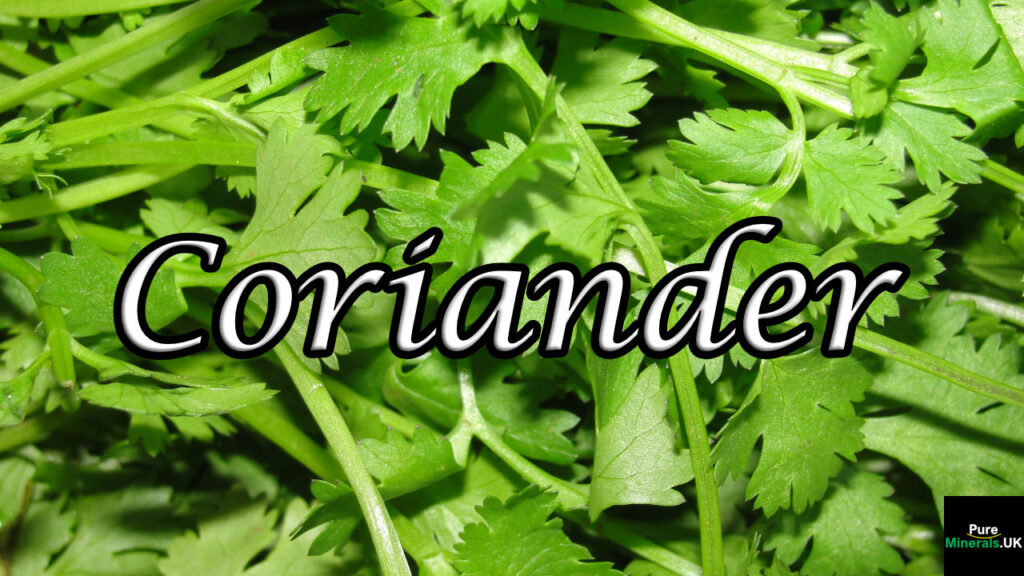
Key Takeaways: Coriander’s Triple Threat
- Coriander seeds and cilantro leaves come from the same plant but offer distinctly different flavors and health benefits, making them versatile additions to your culinary arsenal.
- Regular consumption of coriander may help regulate blood sugar levels, support digestive health, and reduce inflammation throughout the body.
- Beyond cooking, coriander seeds are a key ingredient in craft brewing, particularly in Belgian-style witbiers, where they provide citrusy, spicy notes.
- Toasting coriander seeds before use dramatically enhances their flavor profile, releasing essential oils that contribute to their therapeutic properties.
- Nourish Cooking Company provides expert guidance on incorporating this ancient spice into modern cooking methods for maximum flavor and health benefits.
Updated on November 1, 2025, to include expanded information on Coriander’s culinary uses and nutritional composition.
Why Coriander Deserves a Place in Your Kitchen Today
Coriander might be the most underappreciated spice sitting in your cabinet right now. This ancient seed has been enhancing meals and supporting health since the days of King Tut, found scattered in his tomb to flavor his journey to the afterlife. Today, this humble spice deserves recognition not just for its unique lemon-sage flavor that transforms ordinary dishes into culinary experiences, but also for its impressive roster of health benefits. Whether you’re looking to control blood sugar, support digestion, or simply elevate your cooking, coriander delivers results that few other ingredients can match.
What makes Nourish Cooking Company’s approach to coriander special is our focus on maximizing both flavor and therapeutic potential through proper preparation techniques. The versatility of this spice extends far beyond curries and spice blends – it’s equally at home in sweet baked goods, refreshing beverages, and even craft beer. From professional kitchens to home brewing setups, coriander’s distinctive profile creates depth and complexity that’s impossible to replicate.
While many home cooks reach for pre-ground coriander out of convenience, you’re about to discover why toasting and grinding your own seeds can transform your cooking results. This small step unlocks intensified flavor compounds and enhanced health benefits that make the minimal extra effort worthwhile. Let’s explore how this ancient spice can revolutionize your modern kitchen, one recipe at a time.
Coriander vs. Cilantro: What’s the Difference?
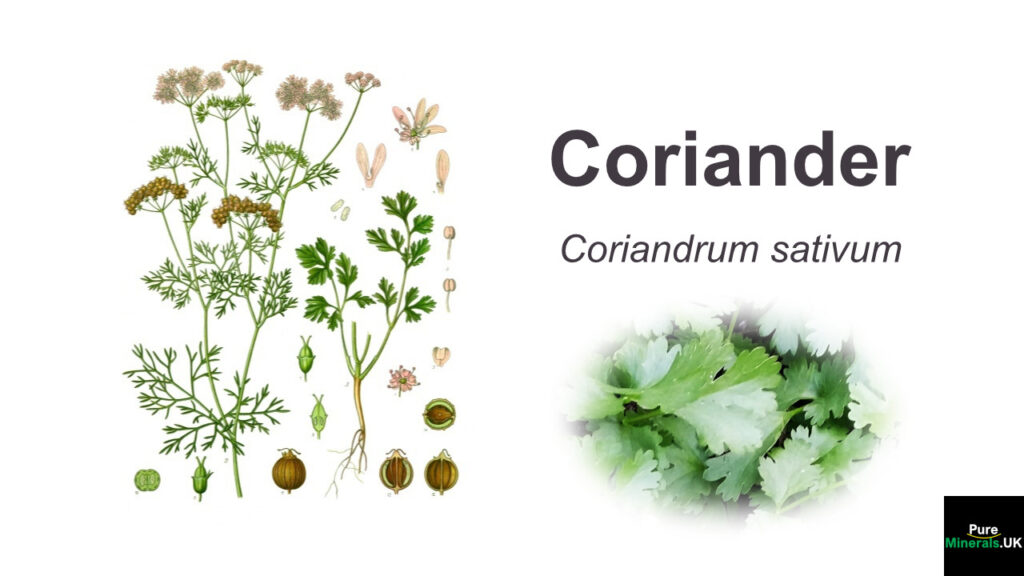
The confusion between coriander and cilantro ranks among the most common culinary mix-ups, particularly across different English-speaking countries. In North America, “cilantro” refers specifically to the fresh leaves and stems of the Coriandrum sativum plant, while “coriander” designates the dried seeds. However, in many other parts of the world, particularly the UK, Australia, and India, “coriander” encompasses both the fresh herb and its seeds. This terminology difference has led to many recipe misinterpretations and kitchen mishaps over the years.
The distinction goes far beyond simple naming conventions – these two forms of the same plant offer dramatically different culinary experiences. Cilantro leaves deliver a bright, citrusy, sometimes polarizing flavor that some people unfortunately perceive as soapy due to genetic variations in taste receptors. Coriander seeds, on the other hand, provide a warm, nutty, slightly citrus flavor profile with subtle hints of sage that virtually everyone finds pleasant. Understanding this fundamental difference prevents the disastrous mistake of substituting one for the other in recipes.
Seeds vs. Leaves: Two Parts of the Same Plant
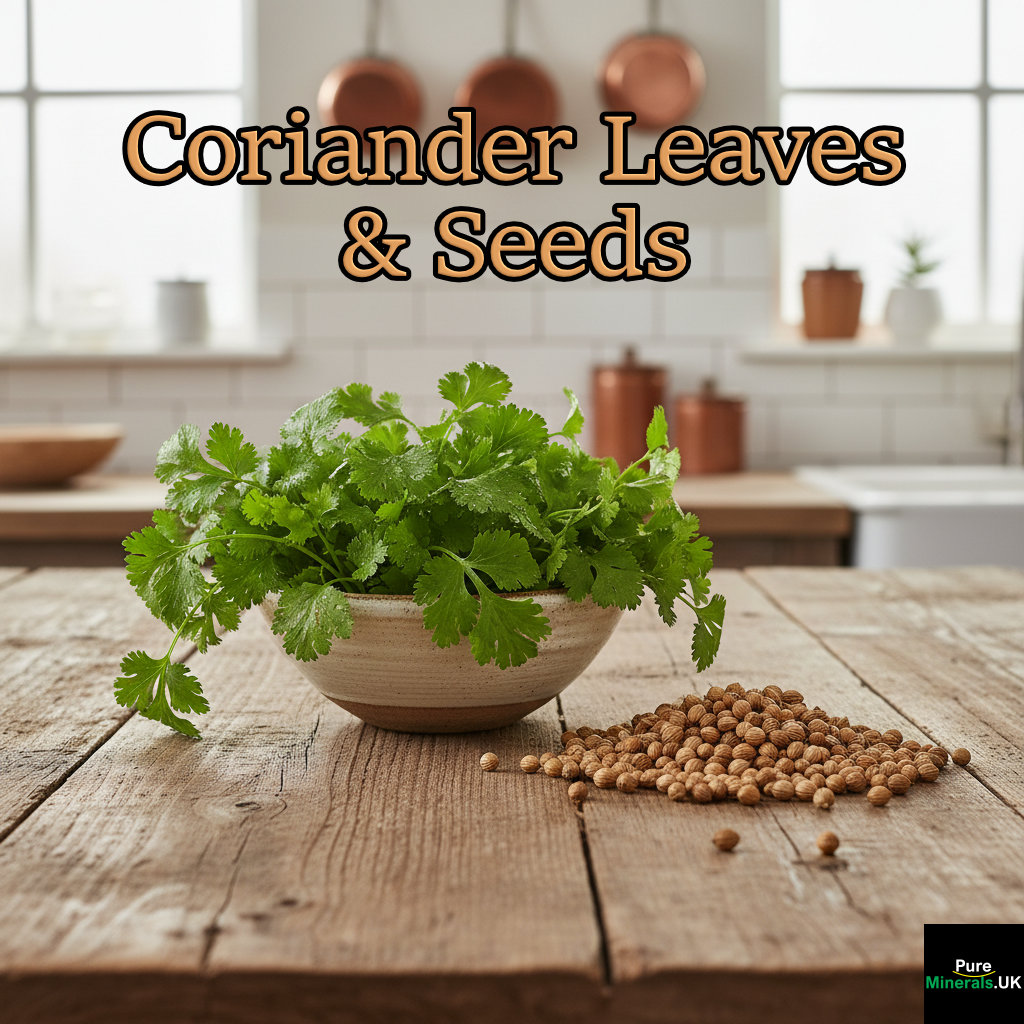
The Coriandrum sativum plant undergoes a remarkable transformation throughout its lifecycle, producing two distinct culinary ingredients. During its vegetative growth phase, it develops the bright green, flat leaves we know as cilantro (or fresh coriander), which are harvested continually while the plant grows. As the plant matures and flowers, it produces small white or pale pink blossoms that eventually develop into the round, ridged, tan seeds we know as coriander. These seeds are harvested when fully dried on the plant, typically 90-100 days after planting.
Interestingly, every part of the coriander plant is edible, though the seeds and leaves are most commonly used worldwide. In Thai cuisine, even the roots are prized for their intense flavor, carefully cleaned and pounded into curry pastes and spice blends. The stems, often discarded by Western cooks, contain intense flavor and can be finely chopped for use in salsas, chutneys, and marinades. Understanding this plant’s full potential reduces waste while maximizing flavor opportunities in your cooking.
The chemical composition significantly differs between seeds and leaves, explaining their divergent flavors and health properties. While fresh cilantro leaves contain high concentrations of volatile compounds like aldehydes (responsible for both their bright flavor and the controversial “soapy” taste some detect), the seeds contain higher concentrations of linalool and geranyl acetate, which create their distinctly warm, spicy-sweet aroma. These chemical differences also account for variations in medicinal properties between the plant parts.
Flavor Profiles That Set Them Apart
Cilantro leaves burst with immediate brightness – a complex mix of citrus, parsley, and a unique pungency that makes them irreplaceable in salsas, Asian salads, and many Mexican dishes. This assertive flavor tends to fade quickly with cooking, which is why cilantro is typically added at the end of preparation or as a fresh garnish. The intensity of fresh cilantro also means it can easily overpower more delicate flavors when used too liberally.
Coriander seeds present an entirely different sensory experience. When whole, they offer subtle notes of citrus and pine, but once toasted and ground, they transform dramatically – releasing complex earthy, nutty flavors with hints of lemon, sage, and even a slight caraway-like warmth. Unlike cilantro leaves, coriander seeds strengthen and mellow with cooking, making them ideal for long-simmering dishes, spice blends, and baked goods. Their warming properties complement both sweet and savory applications, explaining their presence in everything from curry powders to Swedish cardamom buns.
The aromatic compounds in coriander seeds are particularly oil-soluble, which is why they work beautifully in recipes with fats and oils, helping to carry their complex flavors throughout the dish. This oil solubility also explains why coriander seeds are often included in marinades – their flavor compounds effectively penetrate meat fibers when combined with oil. Understanding these fundamental flavor dynamics allows you to use both forms of coriander more effectively in your cooking.
How to Use Each Part Effectively
To maximize cilantro’s impact, add it at the final stages of cooking or as a fresh garnish. The delicate leaves begin to lose their signature bright notes within minutes of exposure to heat. For recipes like Thai curries or Indian dal that call for cilantro’s flavor throughout, consider adding stems early in the cooking process for background notes, then finishing with fresh leaves. When chopping cilantro, a sharp knife prevents bruising that can lead to bitter flavors and discoloration.
Antimicrobial Protection
Coriander contains powerful compounds that fight harmful microorganisms naturally. Studies have shown its essential oils can inhibit the growth of Salmonella, E. coli, and Staphylococcus aureus – common culprits behind food poisoning. This antimicrobial property explains why coriander has traditionally been used to preserve foods in warm climates before refrigeration became available. Research published in the Journal of Agricultural and Food Chemistry confirmed that coriander oil can damage cell membranes of certain bacteria, making it particularly effective against foodborne pathogens.
Cooking with Coriander: Global Kitchen Techniques
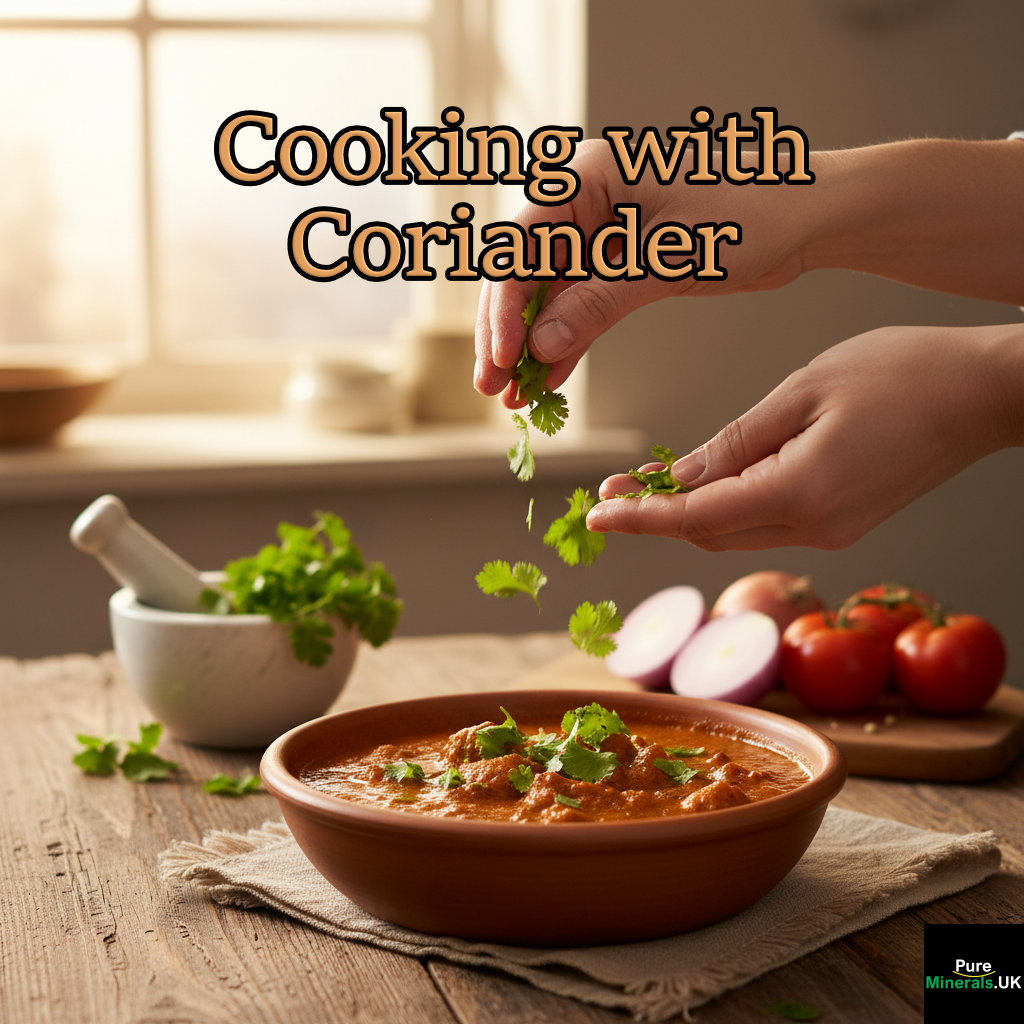
Coriander’s versatility shines across world cuisines, transforming ordinary dishes into aromatic culinary experiences. From the moment coriander seeds hit a hot pan, they release a complex bouquet that serves as the foundation for countless signature dishes. In Indian kitchens, coriander forms a cornerstone of garam masala and curry powders, providing the warm, nutty backdrop against which other spices perform. Middle Eastern cooks rely on it for the authentic taste of falafel and shawarma, while North African tagines would lack their distinctive flavor profile without this ancient spice.
The technique of cooking with coriander varies dramatically depending on cuisine and desired outcomes. For Indian dishes, coriander is typically toasted until fragrant before being ground with other spices. Mexican recipes often combine it with cumin and oregano for marinades, while Scandinavian bakers incorporate it into sweet breads alongside cardamom. The key to mastering coriander lies in understanding its dual nature – the seeds develop depth when exposed to heat, while the fresh leaves (cilantro) maintain their brightness only when added at the end of cooking or served raw.
Whole vs. Ground: When to Use Each Form
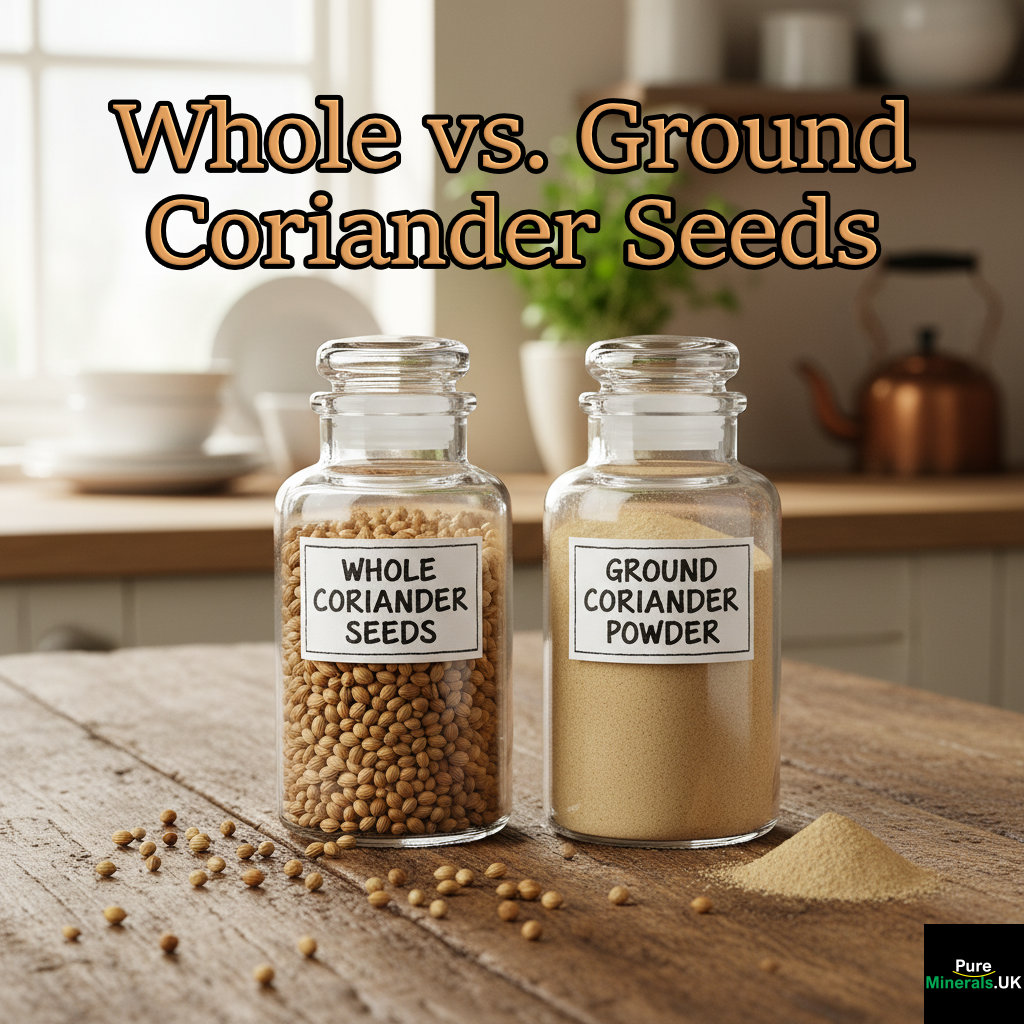
Whole coriander seeds shine in liquid-based preparations where they have time to release their complex flavors gradually. They’re ideal for pickling brines, stocks, marinades, and long-simmering stews where they infuse the liquid without overwhelming it. The whole seeds also work beautifully when crushed just before use, creating a coarser texture that provides bursts of flavor in baked goods and spice rubs.
Ground coriander, however, distributes its flavors immediately and thoroughly, making it perfect for quick-cooking dishes, dry spice blends, and recipes where texture matters. Keep both forms in your kitchen – the whole seeds maintain their potency for up to a year, while ground coriander begins losing its nuanced flavors after just a few months.
Toast Before Use for Maximum Flavor
The simple act of toasting coriander seeds transforms their flavor profile entirely, unlocking depths otherwise inaccessible. When raw, coriander seeds offer subtle citrus and floral notes, but once they hit a dry skillet over medium heat, they develop rich, nutty dimensions with enhanced sweetness and complexity. Toasting activates the volatile oils within the seeds, producing a more aromatic compound that permeates dishes more effectively. The process takes just 2-3 minutes until the seeds become fragrant and slightly darker – be careful not to burn them, as this produces bitter notes that can ruin your dish. For maximum impact, toast seeds just before grinding or using them whole, as the enhanced flavors begin dissipating shortly after heating.
Perfect Spice Pairings
Coriander’s chameleon-like ability to enhance other flavors makes it an exceptional team player in spice blends. Its natural affinity with cumin creates a foundation for countless dishes across the globe – from Mexican salsas to Indian curries. The citrus notes in coriander beautifully complement cardamom and cinnamon in sweet applications, while its earthy qualities balance the heat of chilies in savory dishes. For meat preparations, try combining coriander with black pepper, garlic, and thyme for an aromatic rub that enhances without overwhelming. When brewing or making cocktails, coriander pairs remarkably well with citrus peels and ginger, creating complex, refreshing flavor profiles that surprise and delight the palate.
Beyond these classic combinations, experimental cooks should consider coriander’s unexpected harmony with cinnamon in braised dishes, vanilla in baked goods, and even coffee in spice rubs for red meat. The key is understanding coriander’s dual nature – both warming and brightening – which allows it to bridge flavor profiles that might otherwise clash. This versatility explains why coriander appears in cuisines worldwide despite vastly different culinary traditions.
Signature Dishes from Around the World

Indian cuisine showcases coriander’s versatility through dishes like dhania chicken, where roasted ground coriander forms the backbone of a complex spice blend that permeates tender meat. The famous South Indian sambar relies on coriander’s warm notes to balance the tanginess of tamarind and the heat of chilies. Moving westward, Morocco’s cherished ras el hanout spice blend contains coriander as a key ingredient, finding its way into fragrant couscous dishes and slow-cooked tagines with preserved lemons and olives. In Northern Europe, Swedish cardamom buns often include a hint of coriander to enhance their complex, sweet warmth.
Latin American cuisines transform coriander through different applications – Mexican mole sauces incorporate it for depth and complexity, while Peruvian ceviches use fresh cilantro leaves abundantly alongside lime to create their signature brightness. In Thailand, the humble coriander root becomes a foundational ingredient in curry pastes, providing earthy depth that anchors more volatile flavors. What unites these diverse culinary traditions is their recognition of coriander’s extraordinary ability to enhance and connect other ingredients, creating harmony within complex flavor profiles.
Coriander in Brewing: The Secret Ingredient

Beyond the kitchen, coriander seeds have quietly shaped the world of craft brewing for centuries. This unassuming spice plays a crucial role in creating some of the world’s most distinctive beer styles, particularly Belgian witbiers and German goses. Brewers prize coriander for its ability to impart citrusy, spicy notes that complement the grain bill while adding complexity that hops alone cannot achieve. The seeds’ subtle orange peel quality enhances the brightness of wheat beers without adding bitterness, while their slight peppery finish provides a pleasant counterpoint to the creamy mouthfeel typical of these styles.
Belgian Witbier’s Essential Spice
The resurrection of Belgian witbier in the 1960s by Pierre Celis relied heavily on coriander’s distinctive profile to recreate this nearly extinct beer style. Traditional witbier recipes call for crushed coriander seeds added during the last 5-15 minutes of the boil, where they release their essential oils without contributing harsh tannic elements. The quintessential cloudiness and refreshing character of Belgian whites derive partly from coriander’s interaction with orange peel and wheat proteins. Modern interpretations like Blue Moon and Hoegaarden have introduced millions to coriander’s subtle influence in brewing, often serving as gateway beers for those new to craft styles.
What makes coriander particularly valuable in witbier production is its ability to complement the grain’s natural sweetness while adding complexity that balances the style’s characteristic tartness. The seeds contribute linalool, the same compound found in hops and citrus fruits, creating flavor bridges between ingredients while adding unique spicy notes impossible to achieve through traditional brewing ingredients alone. This botanical addition transforms what would otherwise be a simple wheat beer into a sophisticated, refreshing experience with layers of flavor development from first sip to finish. For more on its uses, check out this coriander guide.
Gruit
Many other natural ingredients can serve as substitutes for the bittering, aromatic, and flavoring characteristics of hops. Beers that rely on other herbs to fill the role of hops are classified as a gruit. Gruit is the German word for herb.
Proper Amounts for Home Brewing
Home brewers exploring coriander’s potential should start conservatively with approximately 0.5-1 ounce (14-28 grams) per 5-gallon (19-liter) batch when brewing Belgian-style witbiers. Freshness matters tremendously – seek whole seeds and crush them just before adding to the boil to preserve their volatile compounds. The timing of addition significantly impacts the final flavor profile: earlier additions (15-20 minutes before flame-out) integrate more thoroughly but lose some bright notes, while later additions (5 minutes or less) preserve more aromatic compounds but may present as more distinct in the finished beer. Experimenting with different addition times across multiple batches allows brewers to fine-tune coriander’s expression according to their preference.
Flavor Contributions to Beer
Coriander’s impact on beer extends beyond simple flavor addition – it creates complex interactions with other ingredients that transform the entire drinking experience. When properly incorporated, it contributes a gentle citrus character reminiscent of orange zest but with subtle peppery undertones impossible to achieve through hops or fruit additions alone. This botanical complexity helps create the distinctive “Belgian” character that distinguishes these beers from German or American wheat styles. Beyond flavor, coriander contributes to mouthfeel through its essential oils, which affect how the beer coats the palate and influence head retention and lacing patterns.
Advanced brewers have discovered that different coriander varieties offer distinct flavor profiles – Indian coriander typically provides stronger citrus notes, while European varieties trend toward spicier, more herbal characteristics. The degree of crushing also significantly impacts extraction – coarsely crushed seeds release fewer but fresher aromatic compounds, while finely ground powder extracts more intensely but can contribute unwanted astringency. This nuanced understanding allows craft brewers to precisely control coriander’s contribution to their signature creations.
Beyond traditional applications, innovative brewers are exploring coriander in new contexts – from coriander-infused IPAs that bridge citrusy hop notes to barrel-aged strong ales where coriander’s complexity develops alongside wood character over time. Some brewers have even experimented with adding fresh cilantro leaves to certain styles, though this remains controversial due to the polarizing nature of their flavor profile.
- Belgian Witbier: 0.5-1 oz crushed coriander per 5 gallons
- German Gose: 0.25-0.5 oz per 5 gallons, often paired with salt
- Experimental IPAs: 0.1-0.3 oz as a finishing addition
- Farmhouse Ales: 0.5-0.75 oz, sometimes with multiple additions
- Barrel-aged Specialties: 0.25-0.5 oz for subtle complexity during extended aging
How Coriander Affects Beer
Coriander contributes citrus, spice, and other flavor characteristics, not bitterness.
- Citrus notes: It adds lemony, citrus-zesty flavors, especially when freshly crushed.
- Spice notes: It provides a unique spiciness with floral undertones.
- Aroma: The seed’s aromatic oils, including linalool, produce a potent fragrance. Linalool occurs in many hops.
- Addition timing: For the best aroma, coriander seeds are typically added late in the boil, similar to aroma hops. Adding them during fermentation can also enhance aromatic compounds, but adding them during the mash results in the lowest volatile compound content.
For a complete hop substitute, consider brewing a gruit
Before hops became the standard bittering agent in brewing around the 1500s, brewers used a wide variety of herbs and spices to balance their beers. These hop-free beers are known as gruit ales.
To replicate the full effect of hops, gruit recipes often use a combination of ingredients to provide bitterness, flavor, and preservation. Common gruit ingredients include:
- Bittering agents: Yarrow, mugwort, and horehound are used to add bitterness.
- Flavor and aroma: Juniper berries, ginger, aniseed, and spruce tips can provide flavor and aroma.
- Preservation: Other herbs in gruit were also known for their preservative qualities.
DIY Coriander Remedies for Common Ailments
The therapeutic potential of coriander extends well beyond the dining table, offering effective natural remedies for numerous common health complaints. Traditional healing systems across multiple continents have utilized this versatile seed for thousands of years, with modern research increasingly validating many of these applications. Creating your own coriander-based remedies at home allows you to access these benefits without artificial additives or preservatives typically found in commercial preparations.
The key to effective coriander remedies lies in proper preparation methods that extract and preserve the plant’s bioactive compounds. Different preparation techniques access different medicinal properties – water extractions (teas and infusions) effectively draw out water-soluble compounds beneficial for digestive and anti-inflammatory applications, while oil-based preparations better extract fat-soluble components ideal for topical treatments. Understanding which method suits your specific health needs ensures optimal results from this versatile botanical.
Before incorporating coriander remedies into your wellness routine, it’s important to note that while generally recognized as safe for most people, coriander may interact with certain medications, particularly blood thinners and medications for diabetes and high blood pressure. Those with allergies to plants in the Apiaceae family (including carrots, celery, and parsley) should exercise caution with concentrated coriander preparations. Always consult a healthcare professional before using medicinal doses of any herb, especially if pregnant, nursing, or managing chronic health conditions.
Coriander Tea for Digestion
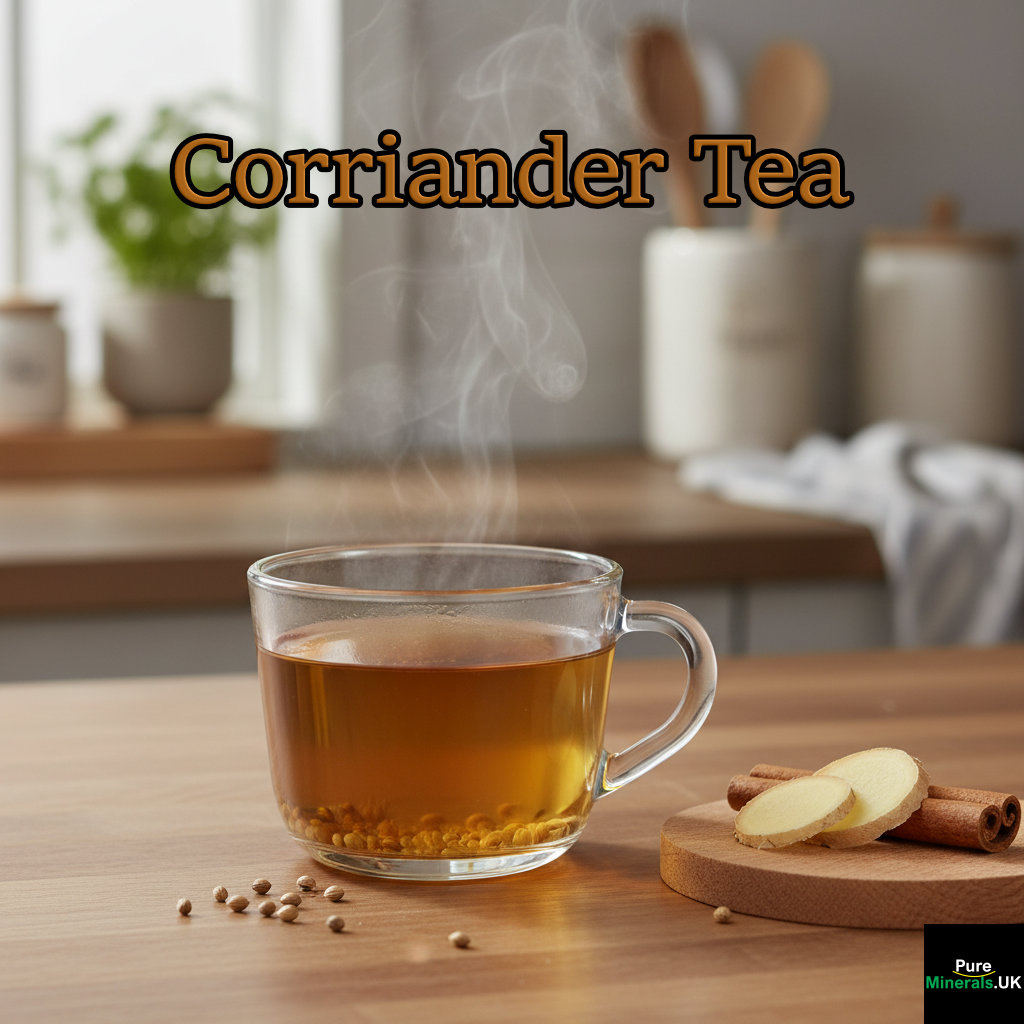
A simple coriander seed tea provides remarkable relief for numerous digestive complaints, from post-meal bloating to more chronic digestive discomfort. The seeds contain compounds that stimulate digestive enzyme production while relaxing the intestinal muscles, creating a dual-action approach to improving digestive function. This gentle remedy works particularly well after heavy meals or during periods of digestive distress without causing the drowsiness associated with many over-the-counter options.
To prepare an effective digestive tea, lightly crush 1-2 teaspoons of coriander seeds using a mortar and pestle or the flat side of a knife – this crucial step breaks the seed coat to release the beneficial volatile oils. Steep the crushed seeds in a cup of boiled water, covered, for 5-10 minutes, then strain and sip slowly while still warm. For enhanced effectiveness, consider adding a slice of fresh ginger or a small piece of cinnamon stick during steeping, as these spices complement coriander’s carminative (gas-relieving) properties.
For maximum therapeutic benefit, timing matters significantly. This tea works best when consumed about 15-20 minutes after meals for digestive support, or between meals for more general anti-inflammatory benefits. Some traditional practitioners recommend a stronger morning brew (using up to 1 tablespoon of crushed seeds) for stimulating sluggish digestion throughout the day, particularly for those with chronic constipation or slow metabolic function.
Traditional Coriander Digestive Blend
1 tablespoon crushed coriander seeds
1 teaspoon fennel seeds
1/2 teaspoon cumin seeds
Small piece fresh ginger, sliced
Honey to taste (optional)Combine all spices in a teapot, add 2 cups boiling water, steep covered for 10 minutes. Strain and sip warm after meals to support healthy digestion, reduce gas, and calm intestinal spasms. This ancient formula has been used in Ayurvedic medicine for centuries as a digestive tonic.
For chronic digestive issues, consistency proves more effective than intensity – a daily cup of mild coriander tea often provides better long-term results than occasional stronger preparations. Many practitioners recommend a three-week course of daily coriander tea for addressing persistent digestive complaints, followed by a week’s break to assess improvements. This gentle rhythm respects the body’s need for both support and self-regulation while allowing the herb’s cumulative benefits to manifest.
Anti-Gas and Bloating Solutions
Coriander seeds excel at relieving uncomfortable gas and bloating through several mechanisms. Their volatile oils, particularly linalool and geranyl acetate, help relax the smooth muscles of the digestive tract, allowing trapped gas to move through the system more efficiently. Additionally, these compounds help normalize gut contractions that may become irregular during digestive distress. For quick relief, chew a half-teaspoon of whole seeds thoroughly after meals, especially those containing known gas-producing foods like beans, cruciferous vegetables, or dairy. For a more targeted remedy, combine equal parts crushed coriander and fennel seeds, steep in hot water for 10 minutes, strain, and sip slowly – this synergistic blend often provides relief within 15-30 minutes for even stubborn bloating.
Topical Applications for Skin Issues
Coriander’s anti-inflammatory and antimicrobial properties make it surprisingly effective for various skin concerns when properly prepared. A cooling coriander compress can significantly reduce the discomfort of minor burns, insect bites, and inflammatory skin conditions. Prepare by steeping 2 tablespoons of crushed seeds in a cup of hot water for 15 minutes, strain, cool completely, then soak a clean cloth and apply to affected areas for 10-15 minutes several times daily.
For itchy skin conditions, a stronger preparation made by simmering 1/4 cup seeds in 2 cups of water for 20 minutes creates a concentrated solution that can be added to bathwater or used in compresses to relieve eczema flares and general skin irritation. The seed’s natural compounds help reduce histamine responses in the skin while supporting the healing process through improved circulation to affected areas. For more herbal remedies, you might explore the benefits of chicory for skin health.
How to Select and Store Coriander for Maximum Potency
Quality coriander begins with proper selection – look for plump, rounded seeds with a uniform tan color and pronounced ridges. When purchasing whole seeds, they should feel heavy for their size and release a warm, citrusy aroma when lightly crushed between your fingers. Avoid seeds that appear dusty, shriveled, or unevenly colored, as these indicate age or improper storage. For ground coriander, color serves as your best indicator – fresh ground coriander maintains a light tan hue with slightly golden undertones, while older product darkens to a dull brown as essential oils oxidize. Always purchase from retailers with high turnover to ensure freshness, preferably from stores specializing in spices rather than general supermarkets, where spices may sit on shelves for extended periods.
Fresh vs. Pre-Ground: Quality Considerations
The choice between whole and pre-ground coriander represents one of the most significant decisions affecting the quality of your culinary and therapeutic outcomes. Whole coriander seeds retain their essential oils and aromatic compounds for significantly longer periods – up to one year when properly stored. These locked-in oils contain the majority of both flavor compounds and beneficial phytochemicals that provide health benefits. When seeds are ground, their cell structures break down, exposing these volatile compounds to oxygen and initiating a rapid deterioration process.
Pre-ground coriander offers undeniable convenience but at a substantial cost to potency. Studies show that ground coriander loses up to 85% of its essential oils within just six months, even in sealed containers. This degradation dramatically impacts both flavor and therapeutic potential. The difference becomes immediately apparent in side-by-side testing – freshly ground coriander delivers bright, complex citrus-pine notes with warming undertones, while older pre-ground powder often presents as merely musty with diminished aromatic qualities.
For serious cooks and health enthusiasts, investing in a dedicated spice grinder creates the optimal middle ground between convenience and quality. A simple electric coffee grinder reserved exclusively for spices allows you to store whole seeds for maximum shelf life while accessing freshly ground powder as needed. This approach ensures maximum flavor impact and therapeutic benefit in your culinary creations and remedies. For those without a grinder, a mortar and pestle, or the bottom of a heavy pan can effectively crush seeds just before use.
Coriander Quality Test
Rub a pinch of coriander between your fingers and immediately smell:Fresh coriander should release a bright, citrusy aroma with complex, warm undertones
Aging coriander develops a progressively mustier aroma with diminished brightness
Stale coriander presents little aroma or a slightly rancid smell indicating oxidized oilsThis simple sensory test provides immediate feedback on your spice quality and helps determine whether replacement is necessary.
Quality also varies significantly between conventional and organically grown coriander. Research indicates that organic cultivation methods often result in higher essential oil content and greater concentration of beneficial compounds like linalool. This occurs partly because plants grown without synthetic pesticides must produce more of their natural protective compounds, many of which contribute to flavor and therapeutic properties. When possible, seek organic coriander from reputable suppliers who can verify both cultivation methods and harvest dates.
Proper Storage Techniques
The enemies of coriander’s potency are heat, light, moisture, and air – proper storage techniques must address each of these factors. Store whole seeds in airtight glass containers rather than plastic, which can allow slow air penetration and may impart unwanted odors over time. Keep these containers in a cool, dark cabinet away from your stove, oven, and direct sunlight, which can accelerate the degradation of volatile compounds.
For those in humid climates, consider adding a few grains of uncooked rice to your spice container to absorb excess moisture. Ground coriander requires even more careful storage – transfer store-bought powder to smaller containers that minimize air exposure, and consider refrigeration for extended freshness, particularly in warm, humid environments where oxidation occurs more rapidly.
Shelf Life Expectations
Understanding realistic shelf life helps maintain quality while minimizing waste. Whole coriander seeds remain viable for 1-2 years when properly stored in airtight containers away from heat and light. Their quality doesn’t suddenly collapse at the end of this period, but gradually diminishes, with noticeable flavor degradation beginning around 12-18 months. Ground coriander’s timeline is dramatically compressed – optimal flavor persists for just 3-4 months, with significant deterioration evident by 6 months. For maximum efficiency, purchase whole seeds in quantities you’ll realistically use within a year, and grind only what you’ll need within a few weeks.
The ideal approach combines strategic purchasing with regular quality assessment. Rather than relying solely on calendar dates, periodically evaluate your coriander through the crush-and-smell test to assess remaining potency. As coriander ages, you may need to increase quantities in recipes to achieve the desired flavor impact, though this approach has limitations – older coriander lacks certain volatile compounds that simply cannot be compensated for through increased quantity. When your coriander no longer releases a bright aroma when crushed, it’s time for replacement, regardless of how recently it was purchased.
Grow Your Own Coriander: From Seed to Harvest
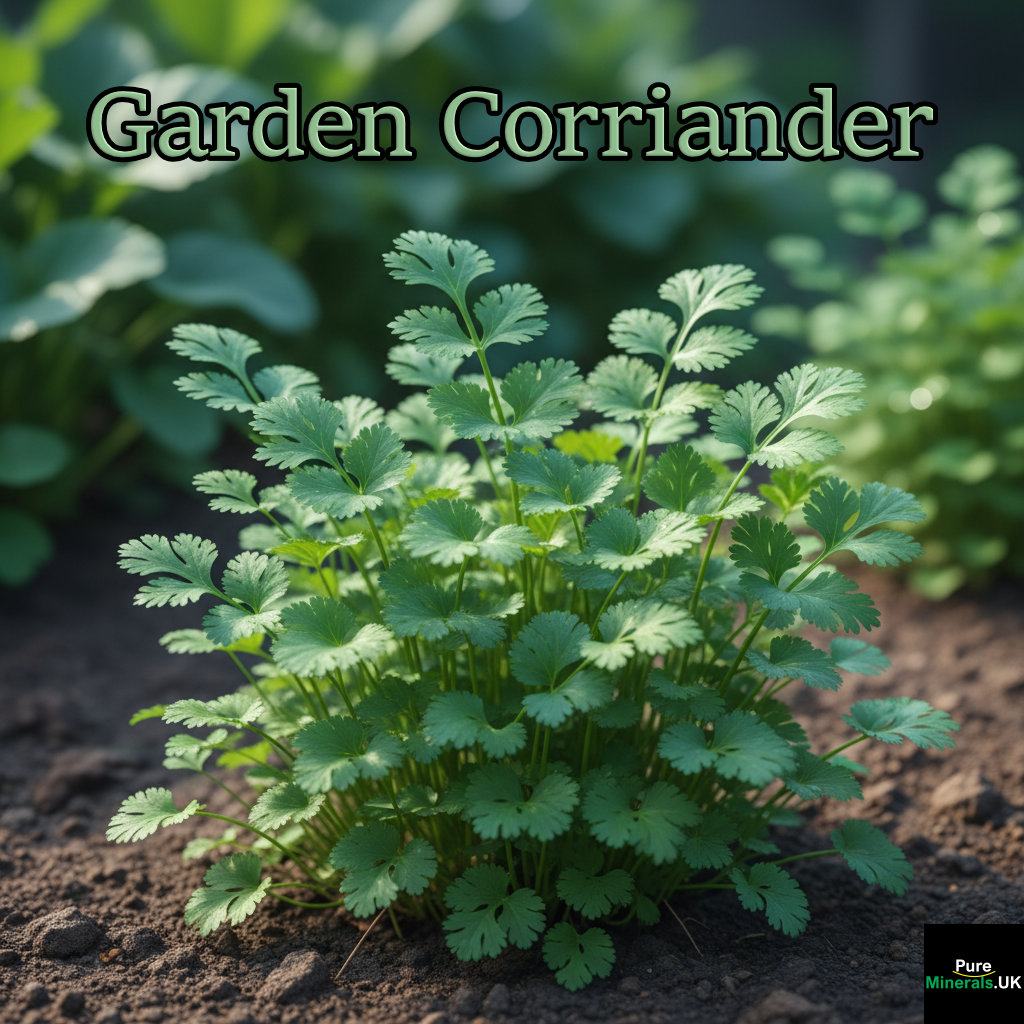
Growing coriander provides unparalleled freshness while connecting you to the complete lifecycle of this remarkable plant. The dual-purpose nature of this herb means one planting can yield both fresh cilantro leaves and, if allowed to mature, coriander seeds. Home cultivation eliminates concerns about commercial pesticides while providing a continuous supply of cilantro leaves that would cost significantly more if purchased regularly.
Perhaps most importantly, growing coriander grants access to the plant’s roots – prized in Thai cuisine but rarely available commercially – and allows harvest at the precise moment of peak flavor, something impossible with store-bought alternatives. With minimal space requirements and simple growing conditions, this herb offers exceptional returns for even novice gardeners.
Ideal Growing Conditions
Coriander thrives in cool, sunny conditions with moderate water and well-draining soil. Unlike many herbs that prefer intense summer heat, coriander performs best when temperatures range between 50-85°F (10-29°C), making it ideal for spring and fall gardens in most climate zones. Plant seeds directly in the garden after danger of frost has passed, sowing approximately ¼ inch deep in rows 12 inches apart. For continuous leaf harvest, implement succession planting by sowing new seeds every 2-3 weeks throughout the growing season.
Coriander doesn’t transplant well due to its sensitive taproot, so direct seeding proves far more successful than starting indoors. In hot summer regions, provide afternoon shade to prevent premature bolting (flowering), which significantly alters leaf flavor and signals the plant’s transition from vegetative growth to seed production. To learn more about the coriander plant, its uses, and history, explore further resources.
Harvesting Seeds vs. Leaves
For cilantro leaves, begin harvesting when plants reach 6-8 inches tall, taking the outer leaves first while leaving the central growth point intact for continued production. Morning harvests yield the highest essential oil content and freshest flavor. Harvest regularly to encourage bushier growth and delay flowering, cutting stems near the base rather than just removing individual leaves. For maximum yield, never remove more than one-third of the plant at once, allowing recovery between harvests.
If your goal is coriander seeds, management changes significantly. Allow plants to flower without harvesting leaves (or minimize leaf harvest), as the plant requires its foliage to produce energy for seed development. The delicate white or pale pink flowers attract beneficial insects before developing into green seed pods. Harvest seeds when pods turn tan but before they fully dry and split on the plant – typically 90-100 days after planting. Cut entire seed heads with several inches of stem attached and hang upside down in paper bags in a warm, dry location. As pods dry, seeds naturally fall into the bag, completing the transition from garden to spice cabinet.
Common Growing Problems and Solutions
Coriander’s reputation for being finicky stems primarily from its tendency to bolt (flower prematurely) when stressed by heat, transplanting, or inconsistent watering. Once bolting begins, leaf production dramatically decreases while flavor becomes more bitter. Prevent premature bolting by providing consistent moisture, planting during cooler seasons, choosing bolt-resistant varieties like ‘Slow Bolt’ or ‘Leisure,’ and providing afternoon shade in warmer climates. If plants begin flowering despite these measures, quickly harvest remaining leaves and either remove plants or allow them to complete their lifecycle for seed production.
Pest issues remain relatively minor with coriander, though aphids occasionally colonize new growth and can be addressed with a strong spray of water or insecticidal soap if infestations become severe. The most common disease challenge is powdery mildew, particularly in humid conditions with poor air circulation. Prevent this fungal issue by spacing plants adequately, watering at the soil level rather than overhead, and ensuring morning sun exposure to dry foliage quickly. Removing affected leaves promptly prevents spread, while maintaining healthy soil through compost additions naturally strengthens plants’ disease resistance.
Add This Ancient Spice to Your Modern Life Today
From supporting healthy blood sugar levels to transforming ordinary meals into aromatic culinary adventures, coriander’s versatility makes it a worthy addition to your daily wellness and cooking practices. Begin with simple applications – adding freshly ground seeds to morning smoothies, sprinkling them over roasted vegetables, or creating a simple tea after heavy meals – then gradually explore more complex culinary and medicinal uses as you become familiar with this remarkable spice. Remember that consistency often yields greater benefits than quantity, particularly for digestive and blood sugar support. Whether you’re looking to enhance your cooking, brewing, or natural wellness practices, Nourish Cooking Company offers resources to help you maximize this ancient spice’s potential in your modern lifestyle.
Frequently Asked Questions
Through years of teaching cooking classes and conducting spice workshops, we’ve collected the most common questions about coriander. These practical answers address the real-world challenges and curiosities people encounter when working with this versatile spice. Whether you’re a cilantro-averse cook wondering if coriander seeds might still work for you or a home brewer calculating proper proportions, these responses provide clear guidance for making the most of coriander in your kitchen and wellness routines.
Can people who hate cilantro still enjoy coriander seeds?
Yes, most people who detect a soapy taste in cilantro leaves can still enjoy coriander seeds without issue. The aversion to cilantro stems from a genetic variation affecting specific aldehyde compounds present in the leaves but largely absent in the seeds. These compounds activate olfactory receptors connected to soap-detecting genes in approximately 4-14% of the population (varying by ethnic background). Coriander seeds contain an entirely different chemical profile dominated by linalool and geranyl acetate, which produce warm, citrusy notes without triggering the problematic receptors that cause the soapy perception.
If you’re cilantro-averse but curious about coriander seeds, begin with small amounts in complex dishes where other spices provide balance. Toasting the seeds before use further alters their chemical composition away from any potentially problematic compounds. Many dedicated cilantro haters discover they not only tolerate but actively enjoy coriander seeds, opening up entire cuisines previously avoided due to fresh cilantro’s prominence. This genetic quirk explains how someone might push away a cilantro-laden salsa while happily enjoying garam masala containing substantial coriander.
How can I tell if my coriander seeds have gone bad?
Coriander seeds rarely become unsafe to consume, but they definitely lose potency and flavor quality over time. The most reliable test is sensory – crush a few seeds between your fingers and immediately smell them. Fresh coriander releases a bright, complex aroma with citrus and pine notes, while stale coriander smells musty or faint. Visual inspection provides additional clues – look for uniform color, plump appearance, and intact ridges. Seeds that appear shriveled, unusually pale, or show signs of mold should be discarded. In high-humidity environments without proper storage, coriander may develop mold, which appears as white or colored spots and requires immediate disposal for safety reasons.
Is coriander safe to consume during pregnancy?
Coriander used in normal culinary amounts is generally considered safe during pregnancy, and may even offer benefits through its digestive-supporting properties that can help manage pregnancy-related indigestion. The seeds contain small amounts of dietary fiber, iron, and calcium – all beneficial nutrients during pregnancy. However, medicinal or supplemental doses (such as coriander essential oil or concentrated extracts) should be avoided without professional guidance, as they may contain much higher concentrations of active compounds than food preparations.
Traditional pregnancy wisdom in several cultures actually recommends moderate coriander consumption, particularly for digestive support during the later stages when pressure on the digestive organs increases. However, as with any herb or spice during pregnancy, moderation remains key – incorporate coriander as a normal culinary spice rather than consuming therapeutic quantities. If you have a high-risk pregnancy or take medications, consult your healthcare provider before making any significant dietary changes, including the regular use of herbal preparations, no matter how seemingly benign.
Can coriander interact with medications?
Coriander consumed in normal culinary amounts rarely causes medication interactions, but therapeutic doses may potentially interact with several medication classes. The seeds can mildly lower blood sugar levels, potentially enhancing the effects of diabetes medications (including insulin) and requiring monitoring of blood glucose levels. Similarly, coriander’s modest blood pressure-lowering effect might amplify antihypertensive medications.
Some research suggests coriander might increase the absorption of certain medications due to its impact on gut motility, potentially affecting drug concentration in the bloodstream. If you take prescription medications and wish to use coriander in medicinal amounts (such as concentrated teas or extracts), consult your healthcare provider to ensure safety and appropriate dosing adjustments if necessary. For more on similar herbs, explore cardamom’s medicinal uses.
What’s the best substitute for coriander in recipes?
When coriander seeds are unavailable, cumin provides the closest single-spice substitute, offering similar warmth though lacking coriander’s citrus notes. For more complex flavor matching, combine equal parts cumin and fennel seeds, which together more accurately replicate coriander’s full profile. In sweet applications, a mixture of cardamom and lemon zest creates a reasonable approximation of coriander’s citrusy warmth. For fresh cilantro leaves, flat-leaf parsley combined with a small amount of lime zest offers visual similarity and brightness, though with a distinctly different flavor profile that may still work in many recipes.
The most effective substitution strategy depends on the role coriander plays in your specific recipe. In Indian dishes where coriander forms part of a complex spice blend, simply increasing the remaining spices often works surprisingly well. For recipes where coriander stands more prominently, like Egyptian dukkah or Scandinavian baking, finding a closer match becomes more important. Remember that substitutions inevitably change the final flavor profile, so adjust quantities based on taste as you cook rather than adhering strictly to measurement conversions.
When regularly cooking cuisines that feature coriander prominently, consider keeping both whole seeds and ground powder on hand to prevent last-minute substitution challenges. The versatility of this spice across culinary traditions makes it a worthwhile staple in well-stocked kitchens, particularly given its extended shelf life in whole seed form.
